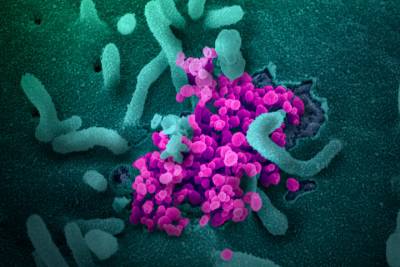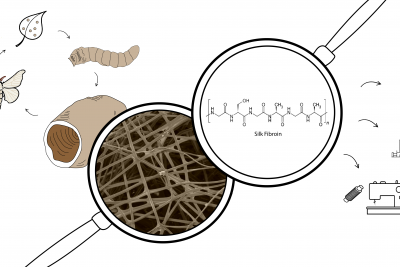Explore Fruit Fly Behavior
Drosophila melanogaster, known as the fruit fly or vinegar fly, makes a great model organism for scientific research—including by high school students or in classroom settings. Read on to learn about the supplies and flies needed to set up your own research station. Observe the flies, get curious, and start asking your own research questions, then leave us a comment or share with @rockedu_ on twitter how it’s going. Good luck!
Explore this...

Why flies?
Drosophila melanogaster is one of many species of vinegar fly, and is found around the world living in close proximity to humans. D. melanogaster flies have been used in labs for over a century, because they’re simple to care for, they don’t take up much space, they’re cheap, and they produce offspring rapidly. These characteristics also make flies ideal for classroom use. Maintaining fly crosses in the classroom looks very similar to what scientists do in the lab – just on a smaller scale. Think of fly bottles as a study system – a starting point from which many open-ended projects could develop.
What you'll need
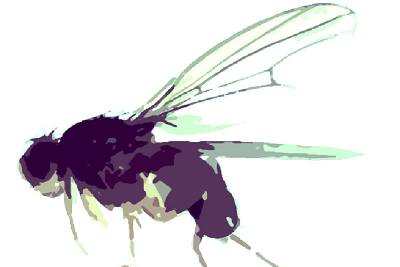
Flies
Carolina Biological supply website: https://www.carolina.com (a good source for supplies and even starter fly cultures)
Bloomington Drosophila Stock Center: bdsc.indiana.edu (researcher’s go-to source for transgenic flies)
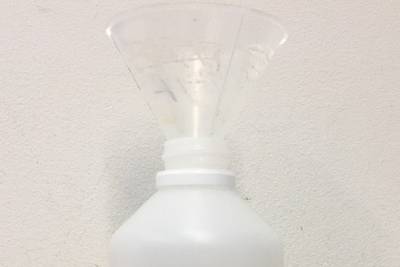
Fly Morgue and Vinegar Trap
Be prepared to dispose of dead flies and to capture escaped flies. The following materials are helpful to have on hand:
- 70% ethanol
- Apple cider vinegar
- A bottle or jar, possibly with a funnel on top
- Plastic wrap
- Rubber bands
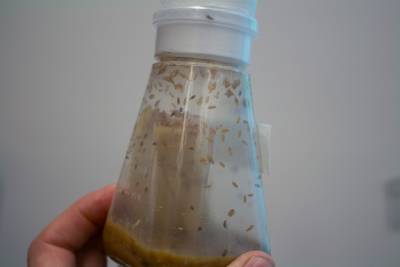
Fly Culture Bottles
You’ll want clear containers containing about 1.5 cm of food media and plugged with something porous (cotton is easiest).
Here are some container options:
- Commercial plastic vials and/or bottles designed for fly culture to cover with
- Reuse spice jars/baby food/takeout containers that have been thoroughly cleaned and sterilized
Here are some covering options:
- Custom plugs here/here
- Rip off bits of cotton wool (buy rolls). Even large cotton balls work! If your container is wide, you can cover it with cheesecloth or a similar porous fabric and secure it with a rubber band.
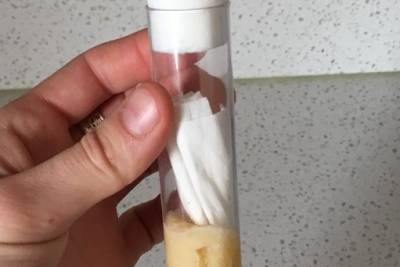
Fly Food
There are various options for fly food, choose the best fit for your situation:
- Homemade with corner store ingredients, but more likely to mold over time: Banana Food
- Homemade with more robust ingredients: Agar/Cornmeal Food
- Commercially pre-mixed food for purchase
Protocols for the homemade foods are available for download in the Save & Share menu.
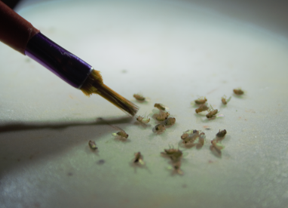
"Fly Pushing" Supplies
To make fly crosses for propagating your fly population and/or making unique genetic offspring, you will want the following:
- A dissecting microscope
- A simple paintbrush or other fine instrument for “pushing” the flies
- CO2 (such as from mixing baking soda and vinegar in a squeeze bottle), FlyNap, or other fly anesthetic
Protocols for fly pushing and anesthesia are available for download in the Save & Share menu.




